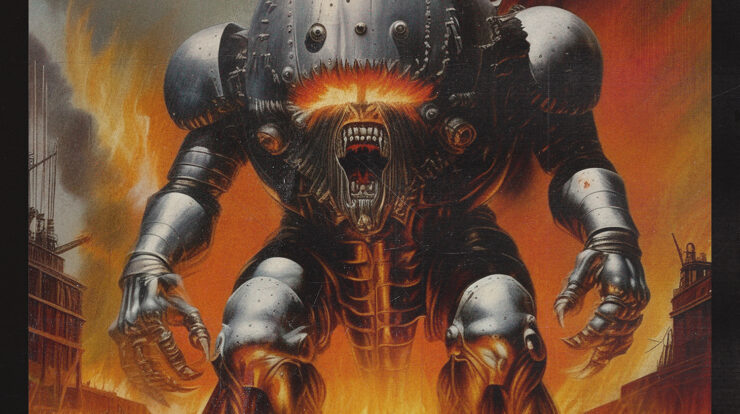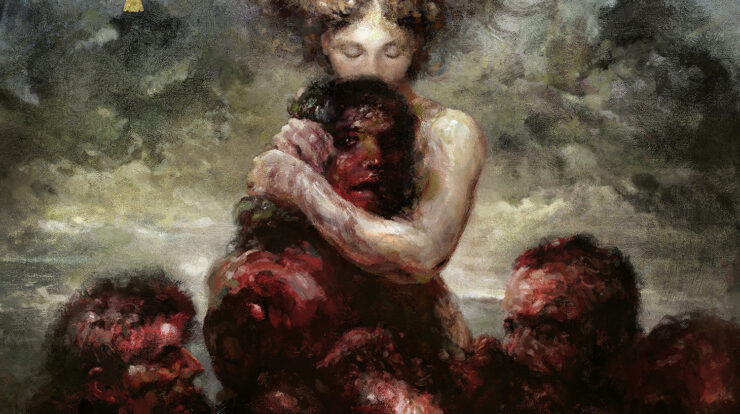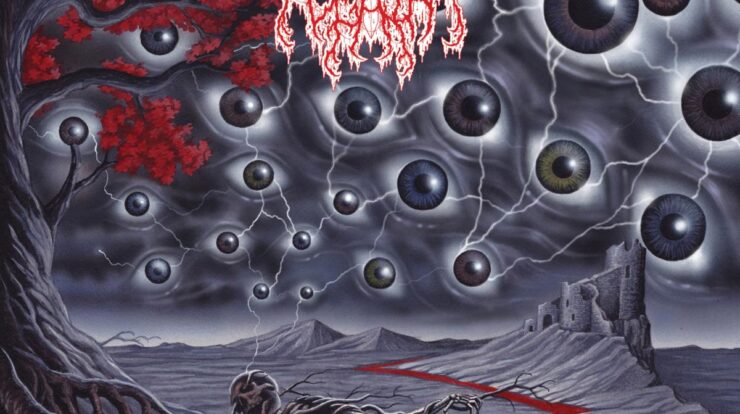This post was originally published on this site
The Scandinavian heritage for heavy music is beyond question. Over the past few decades, its contribution to rock and metal has been immense and has had a rich influence on many bands. So, too, for its smallest member, Iceland, punching above its weight in cultural contribution despite a population about a third the size of Birmingham. The latest product of this hotbed is MÚR – the fresh-faced five-piece of undeniable musical talent. Their self-titled album, released in late November, demonstrates a muti-faceted sound – at ease with both the crushing heaviness of death metal and the glacial majesty of post-rock.
Frontman and keytarist Kári Haraldsson shares the importance of crafting that album to the band’s genesis. “I started writing the first songs for Múr in 2018. It was kind of my intention from the very start to write the whole album, not to release a single or an EP, or something. I was very into the concept of just writing a single, big piece of music.”
Those early “garage band” days featured Kári on drums alongside the two guitarists, Hilmir Árnason and Jón Ísak Ragnarsson. After the pandemic, work focused on crafting the debut album, and with it came the weight of self-expectation. “We had been so thorough with all the songwriting and the recording and this massive video shoot as well (for first single Heimsslit). When you haven’t released anything, you want to be very particular about the first impression you’re giving everyone and not to mess something up. Even though you know there is really nothing to be messed up, in hindsight.”
Kári‘s songwriting credentials are already well-established – as well as fronting MÚR, he has composed electronic music for a feature film and a TV series. Some of that work informs the album. “I’d mostly been doing music for soundtracks and stuff. So I’ve been very used to writing on keyboards and synthesisers and using the computer to make music. When I started writing stuff that was intended for (MÚR), I just approached it similarly to what I had been doing already, which was very kind of atmosphere and synth-based songwriting.” The appeal of a personally-driven creative project is clear. “It’s more authentic to myself… You don’t have to filter it to a scene that already exists, or to someone’s pre-established ideas of what they want it to sound like. This can just be exactly what I want.”
The resultant sound is a melting pot of musical influences, albeit gravitating towards a consistent tone. “A lot of the stuff I’ve written has an existential, or introspective emotional theme to it. It just seems to be what comes out most of the time. It’s just some sort of angle on dealing with yourself and the world around you.” Kári cites DEVIN TOWNSEND, MESHUGGAH and GOJIRA as among a range of influences on the heavier side of the sound. “My intent in the approach of writing the music originally was just to fill a gap I feel didn’t really exist in what I wanted to listen to. You subconsciously build up an arsenal of things you like that you take from different things. I was also studying jazz piano at the time, so I feel like that also influenced how I was playing.”
The band’s development saw Kári move from behind the drumkit to front of stage as the band’s voice, despite little background in singing. Part of this was driven by the music. “It was originally just a means to an end, to make the compositions be able to flower into whatever they wanted to become.” With this came a practical angle to switch to keyboards, the drums assumed today by Árni Jökull Guðbjartsson. “I can’t really be stuck behind the drum kit, even though there’s some fantastic bands with singer drummers. I guess it felt very limiting to me, and also I wanted to try being more of a frontman presence. I felt like that would kind of help focus the energy a lot.” How does he find that live experience? “Very… Very cathartic. It’s a very unique experience. It’s really cool, exploring this almost alter-ego, and just being someone that screams their lungs out on stage holding a massive keytar.”
Ah yes, the keytar. How did that come about? “We had an in-studio performance that we did that was recorded as a school project. I realised, just during that performance and after, I felt very much stuck, kind of like with the drum kit. I felt very like I was just kind of standing by a lectern doing a school presentation or something.” Kári is not blind to the instrument’s novelty overtones. “I just kind of decided to just go with it and present it like something serious and just make it serious. I’ve never really heard anyone feeling like it comes out as this gimmick thing when it comes to us, they’re always kind of surprised… Is this allowed?”
Off the back of the long-gestating album release and two tour dates supporting WHEEL in the UK, the band are keen to get onto their sophomore effort, and for Kári to further express his songwriting ethos. “I feel like a lot of the softer, prettier things have a stronger emotional effect on you when they’re contrasted with something really harsh. And then also, the harder stuff hits a lot harder when you have something else to weigh against it, instead of it just being like noise the whole time.” The ambition is there to maintain the growth built upon that unique sound. “I feel like a lot of people from very different backgrounds and scenes like what we’re doing, so I just want to expand on that, and see how far we can take it, push it as far as we can.”
Múr is out now via Century Media Records.
Like on MÚR on Facebook.
The post Múr: An Arsenal of Sounds appeared first on Distorted Sound Magazine.



